How to choose the right turbo trainer
Smart trainer, wheel-on and direct-drive turbo trainers, or bike rollers? GCN helps you to find the best bike trainer for your needs
Alex Hunt
Junior Tech Writer
© GCN
There is an overwhelming amount of choice when it comes to indoor trainers; this guide aims to shine some light on the topic
Indoor cycling is a very hot topic right now. In recent times, the number of cyclists who rack up thousands of kilometres without leaving their homes has increased exponentially.
A lot of this can be attributed to the rise of smart trainers and interactive virtual cycling worlds, however this is not the be-all and end-all of indoor training. For many riders, indoor training is nothing more than an effective method of getting some time on the pedals when the weather is bad or when time constraints don’t permit a ride outside.
Whatever your aims or goals, indoor riding is accessible for almost everyone. You simply need a turbo trainer and space to set it up, but which turbo trainer do you need? In this guide we'll take you through all of the options.
Turbo trainer guide contents
Jump to:
- What type of trainer are you looking for?
- Wheel-on trainers
- Direct-drive trainers
- Smart trainers
- Exercise and stationary bikes
- Rollers
- Smart rollers
- Indoor cycling accessories
What type of turbo or smart trainer do you need?
To maximise your indoor training experience, you're going to need the right turbo trainer. The key to this is finding one that meets your specific needs and there are some important questions to ask yourself:
- How often are you going to ride indoors?
- What are my goals? Am I looking to train specifically or just maintain some fitness?
- Are you looking to participate in virtual racing?
- How much are you willing to spend on a set-up?
Once you have some answers to these questions, it will make the choices available to you a lot clearer.
There is a whole range of products that will meet the needs of every type of rider, regardless of goals, expectations, and budget. Below you will find a comprehensive list of all the different options available to you, with the pros and cons of each to help you make more informed decisions.
What types of turbo trainers are there?
Long gone is the time when a turbo trainer was just a turbo trainer. It used to be that there was not much separating products in respect of functionality, however this has all changed. Now there is a range of options that go from basic budget trainers through to gradient-simulating standalone static bikes. Not only is there the choice of typical turbo trainers, but you also have rollers and interactive rollers thrown in that confuse the mix even further. Fear not, here is a rundown of everything you need to know.
- Read more: Which Wahoo smart trainer is best for you?
What is a wheel-on turbo trainer?
This is the original ‘turbo trainer’ which uses a resistance unit that mounts to the bike's rear tyre. To hold the bike in place, a specific steel quick-release axle needs to be fitted as the frame of the trainer then clamps around this.
Dumb wheel-on trainers
Dumb trainers get their name from the fact that they do not offer any interactive features that you would expect from a smart trainer. This allows them to come in at a far lower price point with some options available for around the £/$/€100 mark.
Depending on the model some units will come with a cable-operated remote that allows you to adjust the resistance experienced at the rear wheel. Other models will use a fluid resistance unit that is not adjustable but will offer a more ‘road-like’ feel where you can vary the resistance through the use of your gears.
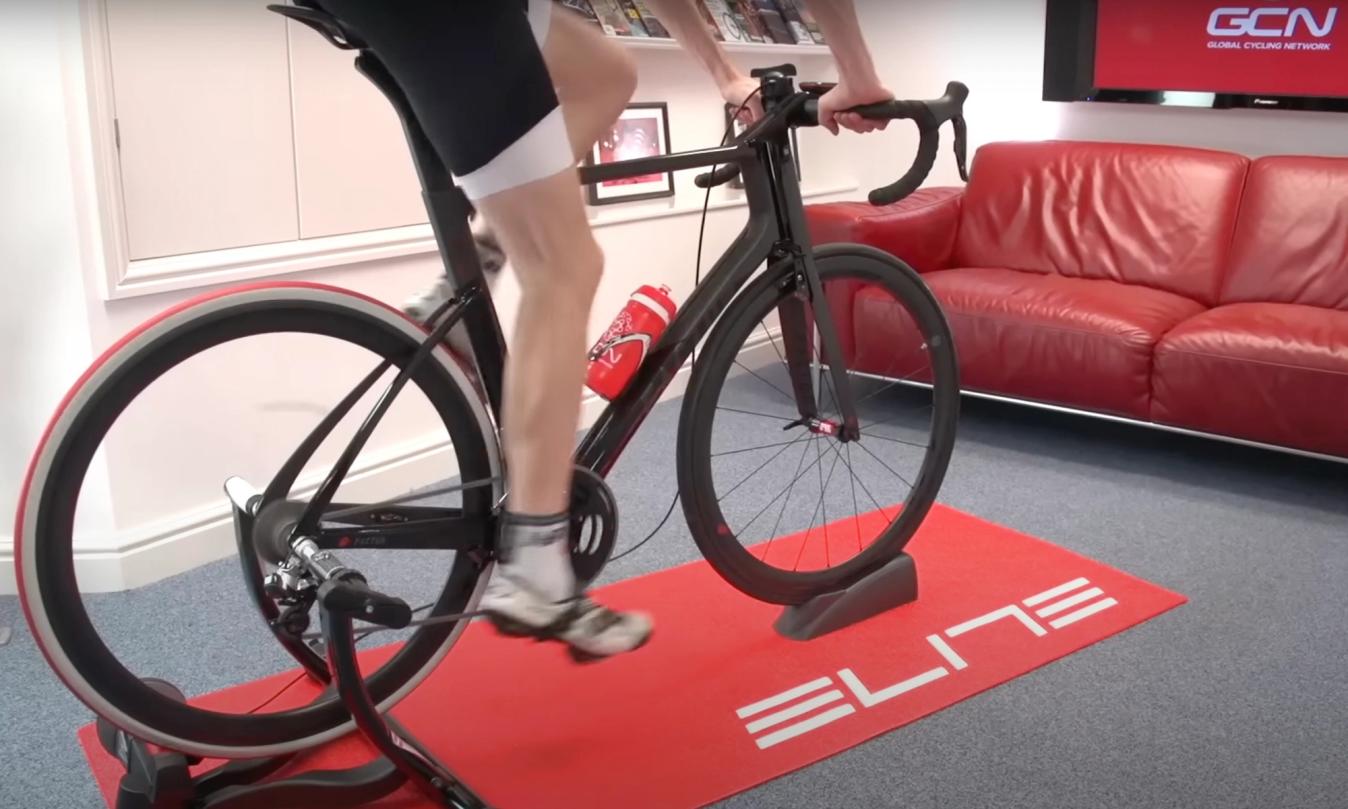
© GCN
Dumb trainers leave your rear wheel in place and clamp around your rear axle
Dumb trainers have some downsides that are important to bear in mind. Firstly, they are the loudest trainers out there; if you live in a block of flats or share your home, these trainers are not particularly courteous. They also do not provide the most realistic riding experience with the resistance being delivered feeling unnatural, as well as suffering from wheel slip on hard sprint efforts.
With all of this being said, for someone looking to maintain a level of fitness on a budget, a dumb trainer can offer just that and could be the ideal option for someone who is going to ride indoors once or twice a week with no specific training expectations.
Wheel-on smart trainers
The more advanced brother of the dumb trainer is the wheel-on smart trainer. This has a very similar silhouette to a dumb trainer and the bike will mount in the same fashion, with a specific steel axle and a resistance unit that is wound onto the rear wheel.
Where a smart wheel-on-trainer differs is the riding experience it can offer. As the name suggests these trainers have smart functionality, allowing them to communicate with indoor training platforms such as Zwift and Wahoo SYSTM, providing real-time resistance adjustments depending on the environment or training you have selected.
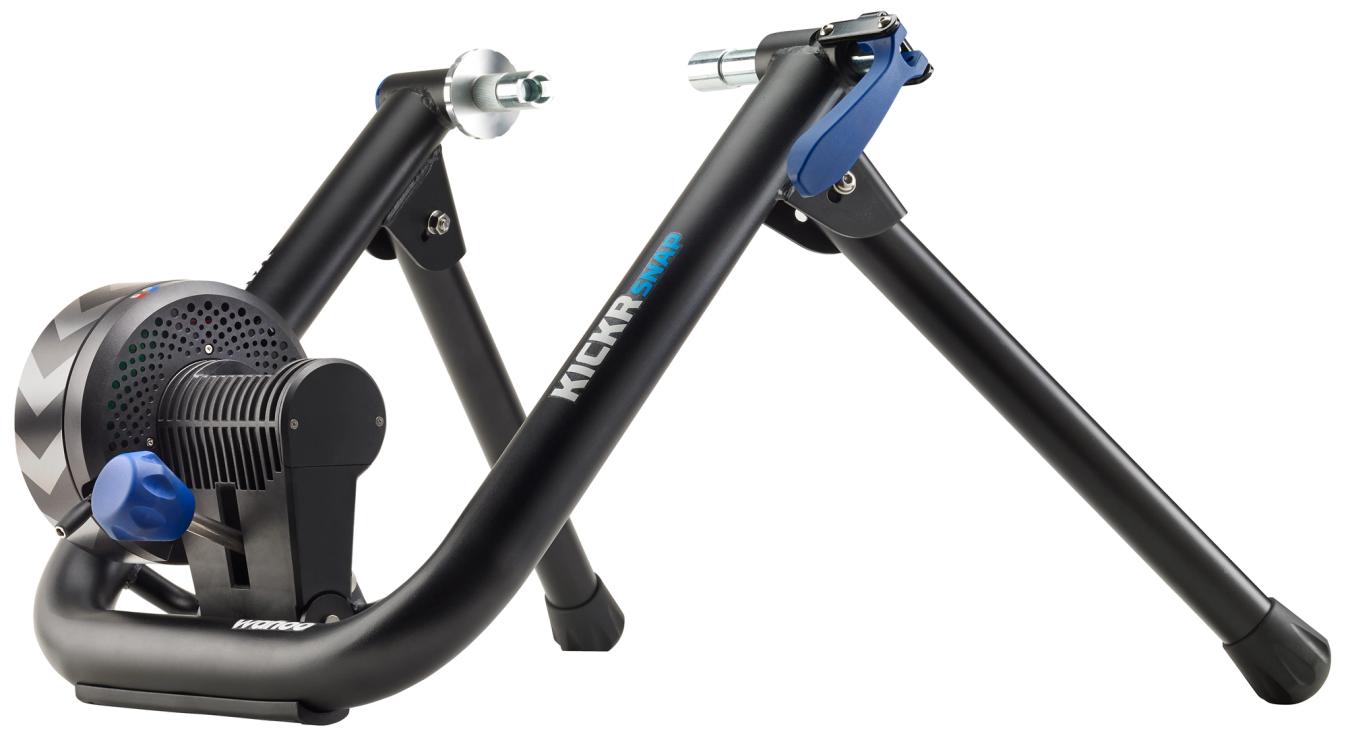
© Wahoo
A smart wheel-on trainer will give you smart features such as variable resistance and power data at a budget-friendly price point
A smart wheel-on-trainer will open up immersive riding and training as well as virtual racing. The same pitfalls of a dumb trainer are present here, with the potential for wheel slip and resistance that feels dissimilar to riding on the road. One other consideration is that not all bikes with thru-axles are going to be compatible, so make sure that your specific bike will work with a smart wheel-on-trainer if you are considering one.
Smart wheel-on-trainers are great for riders who are going to ride indoors infrequently but when they do, would like to use interactive training tools or participate in virtual racing.
What is a direct-drive bike trainer?
The name direct-drive comes from the way the bike mounts to the trainer and how the resistance is offered. A direct-drive trainer has a cassette mounted to it that is then linked to the resistance unit. This means that to mount your bike to the trainer, the rear wheel needs to be completely removed.
A basic direct-drive trainer is going to have the same restrictions as a dumb trainer as it will not offer any level of interactive riding. What a direct-drive trainer does offer above a wheel-on trainer is a more stable and responsive platform. Unlike a wheel-on dumb trainer, direct-drive trainers mount your bike directly to the resistance unit; this makes them a more attractive option if you plan to do sprint efforts where a wheel-on trainer would struggle.

© GCN
Direct-drive trainers have the same capabilities of a dumb wheel-on trainer with a more secure fixture to the resistance unit
Direct drive trainers are considerably quieter than wheel-on trainers making them the go-to choice for riders in house shares or apartment blocks. They do cost a little more than a wheel-on dumb trainer with options starting around £/$/€300, however there can be some bargains found online.
Direct-drive trainers are best suited to riders who are not bothered by interactive riding but want to step up their training and look to ride between two and four times per week.
What is a smart trainer?
This is where the the largest choice of trainers sits right now. The term smart trainer, generally speaking, means a smart direct-drive turbo trainer. Some of the most popular offerings include the Zwift Hub and Wahoo Kickr range. These trainers are what you would be looking at if you are aiming to work on specific training.
Smart trainers have an interactive variable resistance unit that will pair with a host of indoor training software. This allows them to give a realistic feel with the resistance on offer matching that of the displayed terrain. In terms of realistic road feel, smart trainers offer a close-to-true feel that can make riding more enjoyable.
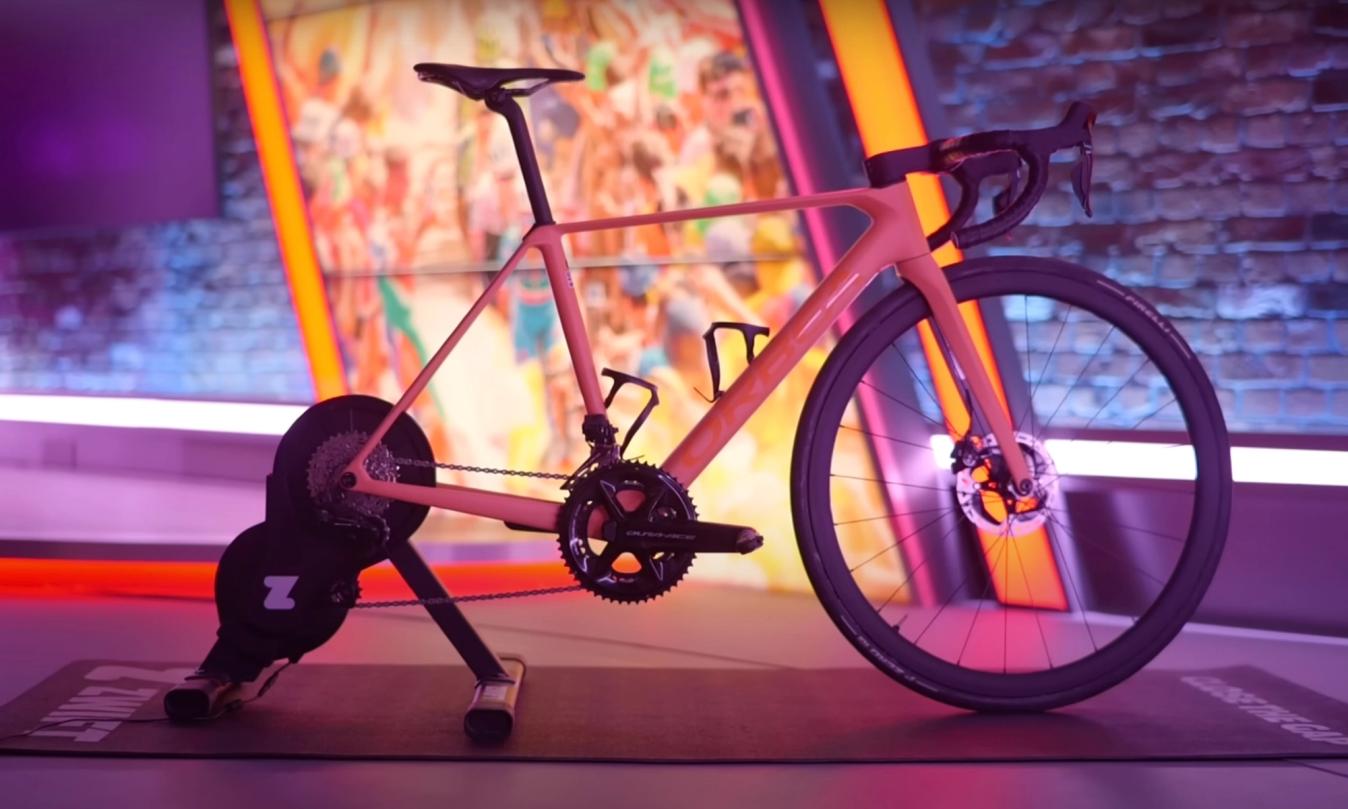
© GCN
A smart trainer set-up will look a lot like a regular direct drive trainer, however it will have interactive capabilities along with an in-built power meter
If you are looking to take indoor racing seriously, these trainers are going to provide a responsive and dependable set-up. Smart trainers will have integrated power meters for measuring your efforts however the accuracy can vary from model to model with the gold standard being +/- 1%.
Smart trainers are more costly than the aforementioned alternatives with the cheapest smart trainers costing around £/$/€450, but that figure can go all the way up to £/$/€1500. They are also heavy and for a lot of models, they do not pack down very small.
A direct-drive smart trainer is ideal for the dedicated cyclist who is looking for an indoor training tool for specific training and reliable virtual racing. It is also worth remembering that to get the most out of a smart trainer a subscription to an online training platform will be required.
Exercise bikes and stationary bikes
These remove the need for you to fit your bike to any equipment at all. Instead, an exercise bike is a self-contained unit for indoor cycling. These allow for the fit of your bike to be matched with a high level of adjustment.
Static bikes operate similarly to smart trainers with the same level of interactive resistance. However, some go a little bit further with the inclusion of virtual gears to give you control as if you were riding your actual bike.
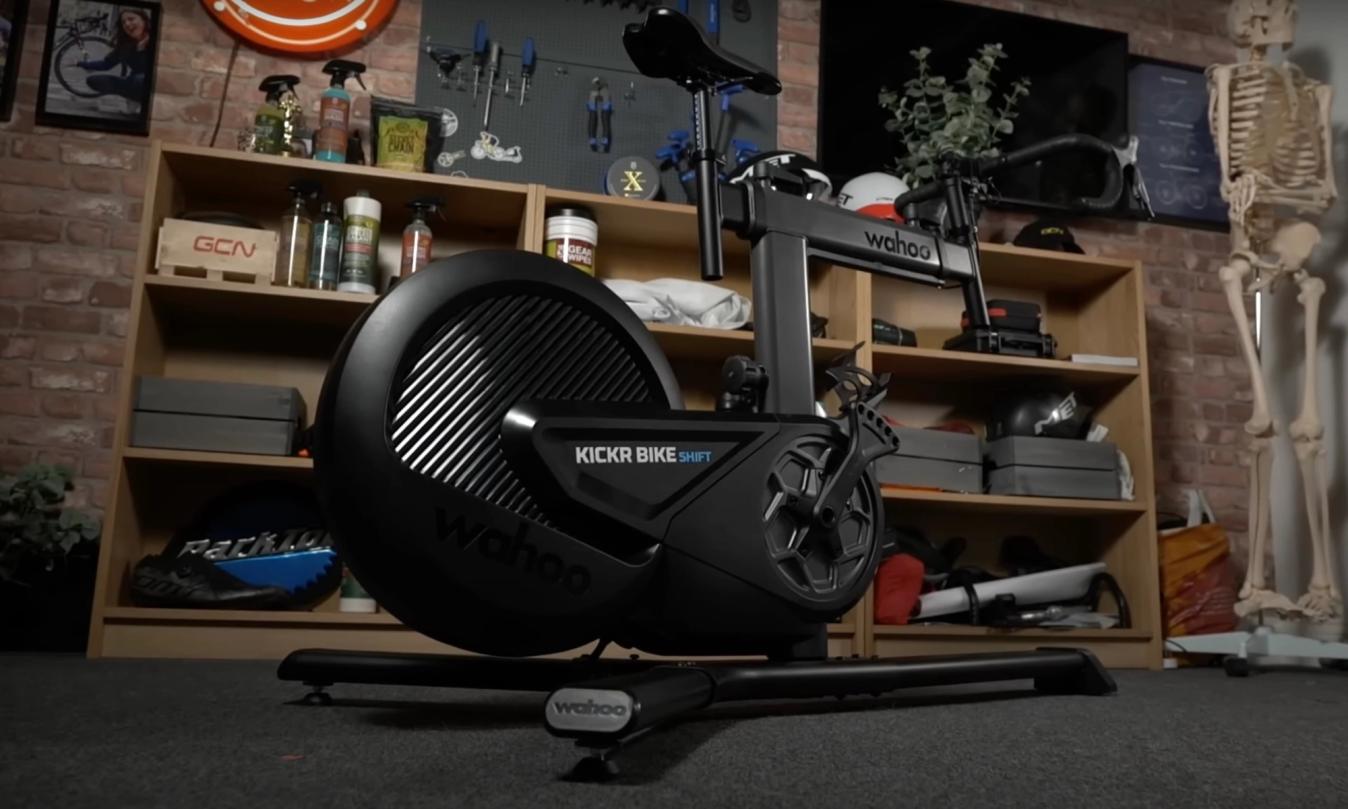
© GCN
Static bikes are the most expensive option when it comes to indoor training but allow your actual bike to be saved for rides outside
A benefit of using an exercise bike is that it protects your bike from indoor wear and tear; your chain and chainrings will not wear. Also, if you are a particularly sweaty person, a static bike protects your actual bike from any salt-based corrosion. If you have the space to keep a set-up permanently in place, a static bike can be a good standalone alternative to typical indoor training configurations.
Stationary indoor bikes like the Peloton and Wahoo Kickr Bike are expensive, typically costing upwards of £/$/€2000, so should only be considered by people who are sure they are going to use them enough to warrant the cost with space to leave a permanent set-up in place.
What are rollers?
These sit somewhat as an aside to the typical indoor training hierarchy and are most commonly seen during warm-ups at races as they are light and easy to transport. Rollers place your bike on three rollers that are all linked via a band. As you pedal the rear wheel spins the rear two rollers which then drive the front roller, spinning up the front wheel.
Nothing is holding you up except your balance and the gyroscopic force of the wheels spinning. For this reason, rollers offer a different challenge and can take a while to master. For some people the mental engagement of riding the rollers makes time pass a lot quicker and makes training more fun. For others, it can be the worst thing in the world, so it is worth seeing if you can give them a try before committing to a purchase.
Rollers do not offer a great deal of resistance with it being relatively easy to ride even in your hardest gear. This makes it great for easy endurance style rides or recovery rides where you aren’t looking to do any high-intensity work.
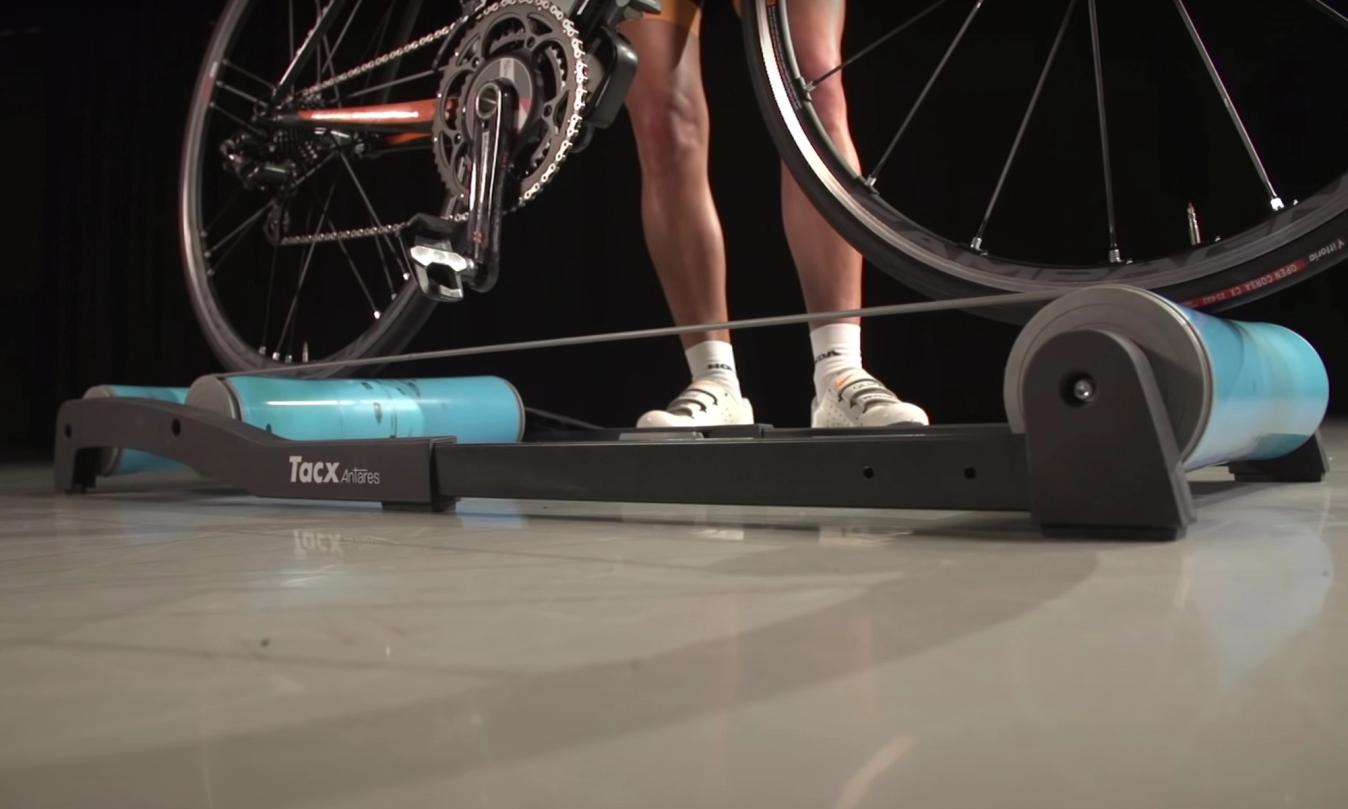
© GCN
Rollers are a cheap alternative to a dumb trainer, they do however take some time and practise to get familiar with
Rollers are ideal for someone who cannot stomach the idea of a typical indoor training configuration and wants a challenge. They can vary quite a lot in price but you can find some basic options for around £/$/€100.
Smart rollers
These are far less common than the other options on this list but they are out there if it is something you want to try. Smart rollers combine the functionality of a smart trainer with the set-up of rollers.
Some smart rollers like the Wahoo Kickr Rollr clamp your front wheel in place, meaning the need to balance is removed, this makes it easy to ride and also leaves your bike completely unaltered, making it quick and easy to install and pack down.
Other options will have you riding in a more typical fashion but with an added resistance unit to provide a more road-like feel that can be paired with virtual training software.
These can be hard to get on with and the smart variable resistance can struggle to accurately represent the power you are trying to achieve. With so many more factors in play including the rolling resistance of the tyres, smart rollers will be less accurate than a direct drive smart trainer.

© Wahoo
Smart rollers are their own niche within indoor trainers, but they provide the ability to use your bike without having to make any alterations to it
Smart rollers retail for £/$/€600 and upwards and are ideal for someone who wants to try something different from the typical indoor training set-ups. Although long, these units are pretty slender and can easily be stored under a bed or stood upright to minimise the footprint they take up.
What other accessories do you need for an indoor cycling set-up?
Regardless of which type of trainer you ultimately select, some universal accessories are necessary to make indoor riding a comfortable and pleasant experience.
A high-power fan
Indoor training, as the name would suggest, takes place indoors. One of the downsides of this is that there is no cooling airflow passing over your body, stripping sweat away and helping to regulate your body temperature. If you have spent any length of time riding indoors at any intensity you will know that you generate heat, and plenty of it.
Finding a high-power fan for your workouts at home, ideally one with a remote control, will keep you cool and allow you to complete the hardest of training sessions. The remote will allow you to control the level of airflow during your session so you don’t end up too hot or too cold.
If you are using a smart trainer, there are some smart alternatives such as the Wahoo Kickr headwind that will automatically vary the airflow depending on your effort. These are not necessary but can be a welcome addition to a more premium indoor set-up.
Exercise mat
No matter which type of trainer you go for, having a good quality exercise mat underneath your trainer will help to protect your floor from sweat as well as any grease, oil, or debris that may come off your bike during a ride.
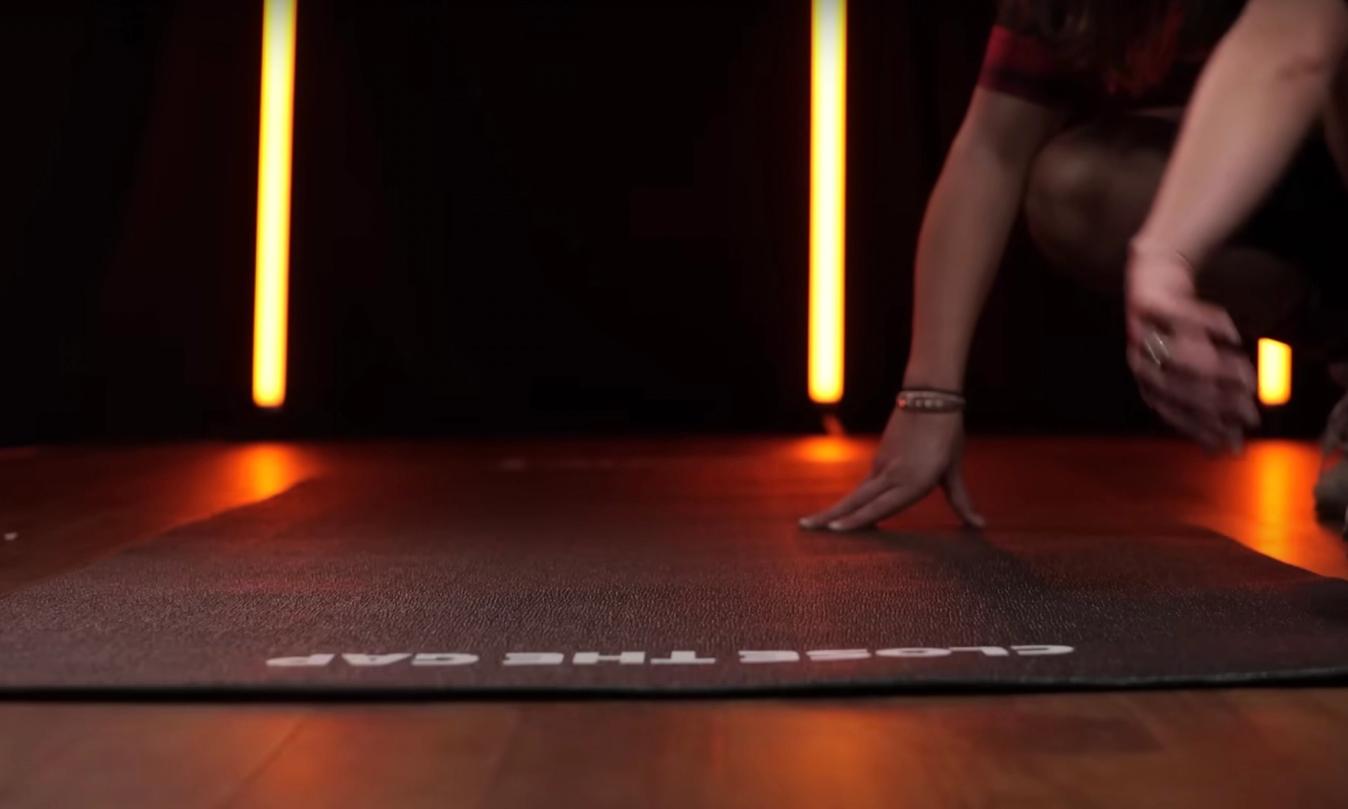
© GCN
A mat will protect your floor from sweat, grease, oil and any debris that comes from your bike whilst riding indoors
This will be especially important if you are using a wheel-on trainer as small deposits of rubber will gather around the base of the trainer. If you ride indoors on carpet, using a mat will prevent any staining and can be wiped clean after every ride.
Towel
The humble towel can serve so many purposes when indoor training but one of the best uses for one is to put over your handlebars and stem. This should help to protect both components as well as your headset bearings from any sweat-based corrosion. Be sure to wipe down these areas after the ride to make sure no residual salt remains.

© GCN
Keeping your bike sweat free will help keep salt based corrosion at bay
Other indoor training accessories
Depending on which type of trainer you opt for, there are plenty of specific accessories to make indoor riding the best it can be. For example, wheel-on trainers are best used with a specific wheel. This way you can fit a turbo tyre that will be harder wearing and will save your nice road tyre from premature wear.
For smart trainers, there is a wealth of training accessories to make your riding feel more realistic including gradient simulators, smart fans, and rocker boards that offer even more real-life movement on the bike.
Which set-ups have you used in the past and which one do you use now? Let us know what you use to get your indoor training fix in the comments below.
Need more indoor cycling help or inspiration? GCN's ultimate guide to indoor cycling has you covered with advice and guides on everything from turbo training tech to workouts.
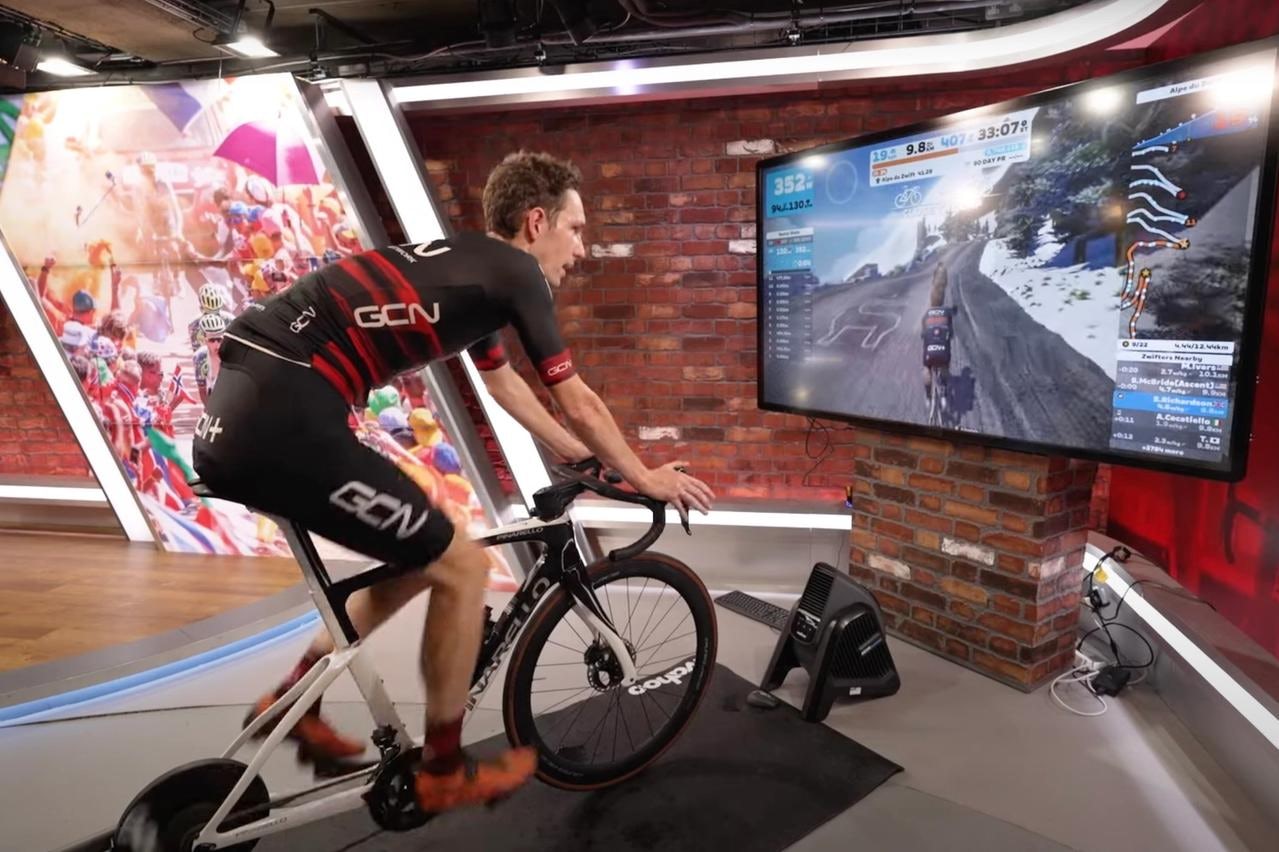









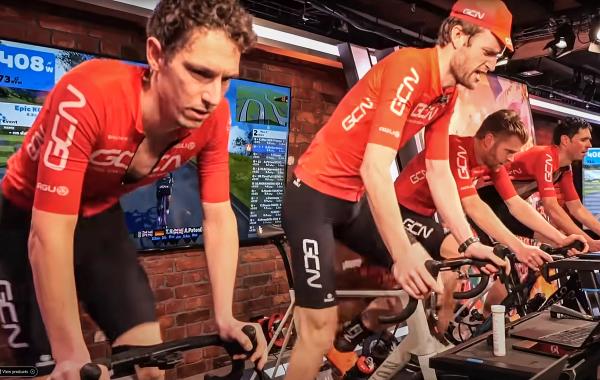
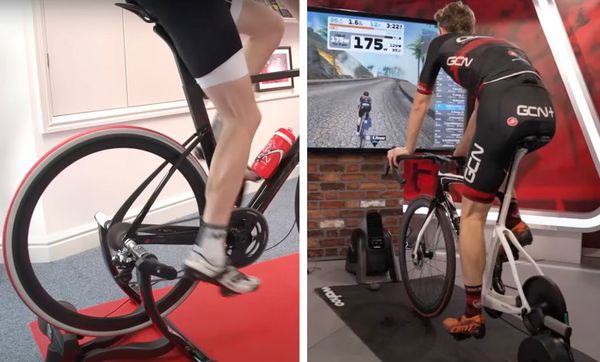

.jpg?w=600&auto=format)